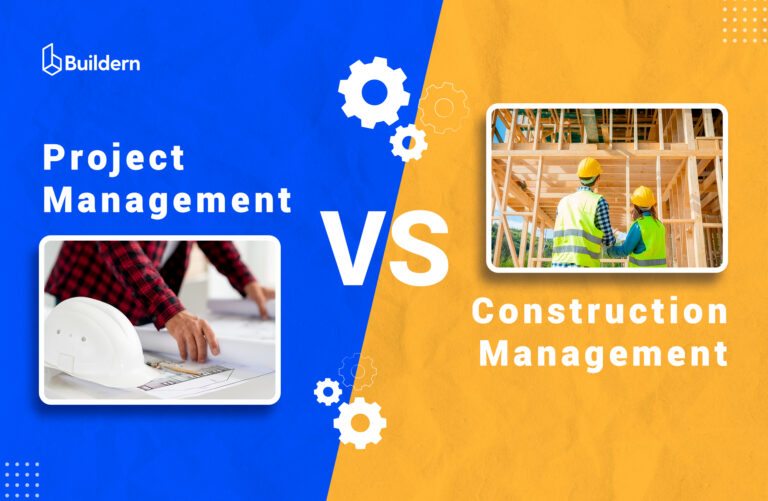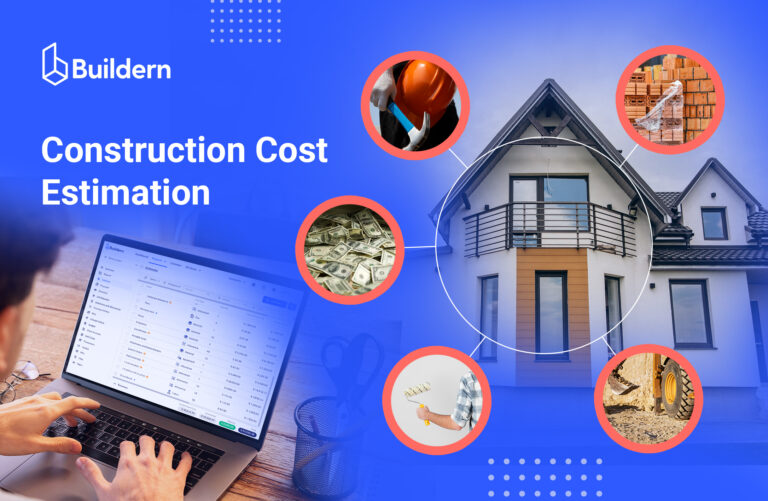Top 7 Attention-Worthy Benefits of Construction Management Software (And Why Builders Rely on Them)
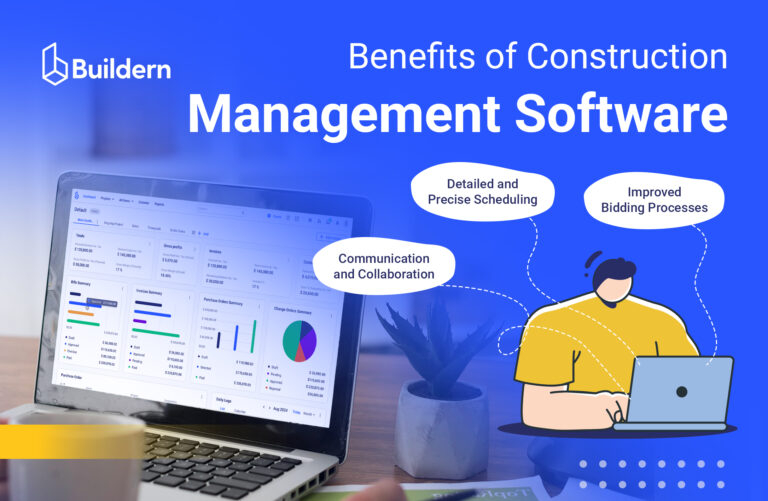
Have you ever wondered how much time, money, and stress could be saved if you had a proper system to organize and manage your projects from start to finish?
Digitization has been around for a long time, and its influence is inevitable across every industry, including construction. From digital takeoffs to CRM and financial management, our industry is rapidly adopting technology to ensure accuracy and create hassle-free workflows.
If you’re still on the fence about investing in a digital solution, we’ve gathered 5+ key benefits of construction management software to help you pick the right tool for your business.
Table of Contents
- Why Should Builders Use Construction Management Software?
- 7 Construction Management Software Benefits
- Types of Construction Management Software
- FAQ

Why Should Builders Use Construction Management Software?
What’s better, real-time communication and collaboration with team members and clients, or having fully digitized budgeting, financial, and accounting integrations?
Our choice is, why settle for one when you can have it all in a single platform?
Advanced construction project management software solutions allow builders access to a multitude of tools that automate their daily workflows. In this sense, Buildern’s integrated platform helps home builders manage tedious tasks like:
- Estimating projects and creating detailed proposals with accurate data.
- Creating detailed schedules with milestones, task dependencies, and critical paths.
- Working with subcontractor bids.
- Managing change orders, bills, client invoices, and other financial details.
- Storing and sharing files with all team members, eliminating the risk of miscommunication or project delays.
💡Here’s a more detailed comparison of the core manual vs. software-managed processes in construction. This table highlights the key differences and how construction job management software can significantly improve efficiency and accuracy across various project stages.
| Aspect | Manual Processes | Software-Managed Processes |
|---|---|---|
| Project Planning | Relies on paper, spreadsheets, and whiteboards, causing delays and errors. | Centralized platform for easy planning, tracking, and real-time updates. |
| Budgeting & Cost Management | Manual tracking leads to mistakes and inefficiencies. | Real-time budget tracking and automatic cost updates ensure accuracy. |
| Task & Resource Allocation | Manual allocation often leads to imbalances and miscommunication. | Seamless task and resource management with automatic updates. |
| Document Management | Risk of lost or disorganized physical or digital files. | Cloud-based storage ensures easy access, security, and version control. |
| Collaboration & Communication | Relies on emails, calls, or in-person meetings, causing delays. | Real-time collaboration and instant updates streamline communication. |
| Risk Management | Difficult to track and mitigate risks in real time. | Automated risk tracking and proactive alerts keep projects on track. |
| Time Tracking & Scheduling | Manual entries lead to discrepancies and delays. | Automated scheduling and time tracking improve accuracy and timeliness. |
| Reporting & Analytics | Time-consuming manual reports with limited accuracy. | Real-time data and automated reports provide insights for better decisions. |
| Scalability & Adaptability | Limited scalability and flexibility. | Easily scalable to any project size, adapting without extra effort. |
| Compliance & Documentation | Manual tracking risks missing regulations or incomplete records. | Automatic tracking ensures compliance and easy access to necessary docs. |
Check out These 7 Construction Management Software Benefits
Software solutions that automate routine tasks and streamline communication provide more than convenience. The right system can bring tangible benefits to your business.
Let’s discuss some of the most tangible ones.
1. Communication and Collaboration
Working with numerous people is inevitable in construction. Clear and timely communication ensures that all stakeholders are on the same page, mitigating risks, reducing delays, and improving outcomes across the board.
💡Here’s an infographic to prove this.

These statistics highlight a striking disparity between teams prioritizing effective communication and those not. The research shows that when communication is streamlined and highly effective, the percentage of projects completed on time nearly doubles to 71%. Compared to the 37% of projects that met deadlines without effective communication, it’s safe to say that communication is crucial for construction projects.
But how does construction management software contribute to on-site communication and collaboration?
Construction teams are always divided between the office and the job site, which poses unique challenges to maintaining up-to-date communication. Office staff handle planning, budgeting, administrative tasks, and communication with the stakeholders, while the on-site workers focus on executing the project’s physical aspects.
The separation often leads to delays in the face of late updates and misunderstandings. Construction project management software acts as a bridge to fix this communication gap and ensure the whole team has access to the most recent project information and updates.
Here are a couple of features a construction project management platform can give you:
Recording Updates on the Go
Most software solutions for builders have Daily Logs (or Site Diary) tools allowing the job-site workers to record anything related to the daily workflows, attach files, etc.
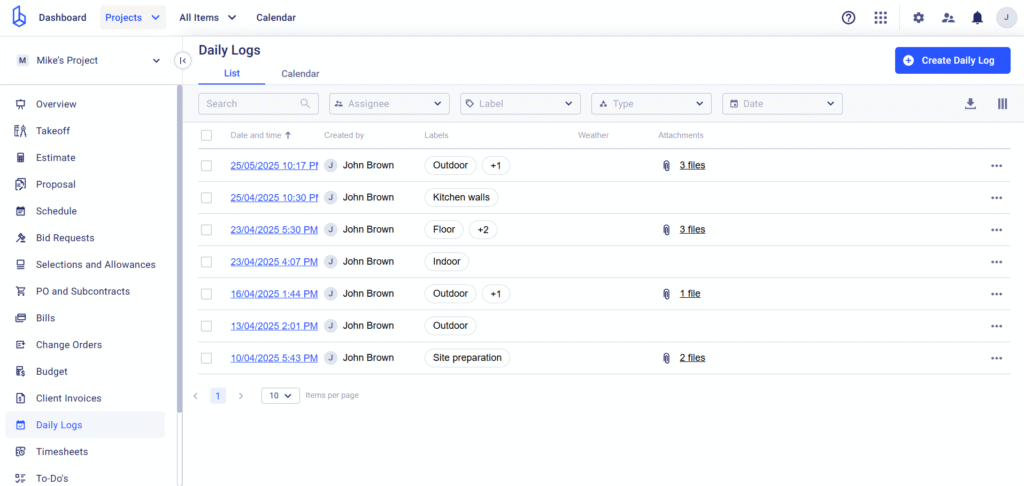
Buildern’s integrated solutions enhance builders’ daily log practices by automatically recording weather information. You can also attach relevant files like photos, blueprints, or documents to the notes, creating a centralized repository of information.
Whenever necessary, updates can be shared promptly with clients, keeping them informed and fostering trust. By maintaining thorough and organized daily logs, teams can track progress effectively, mitigate disputes, and ensure the project’s success.
2. Detailed and Precise Scheduling
Project scheduling is often one of the most challenging aspects of construction management. Plans can change due to weather conditions or unexpected disruptions, so having a single, centralized platform for scheduling and updates is crucial. With construction project management software, teams can create detailed schedules and assign tasks to specific team members.
Here’s more you can do with automated tools:
Task Dependencies and Critical Path Analysis
Not all tasks in construction can be completed independently. Some activities depend on others being finished before they can begin. Buildern’s scheduling tools allow builders to set task dependencies, ensuring that every project phase progresses logically.
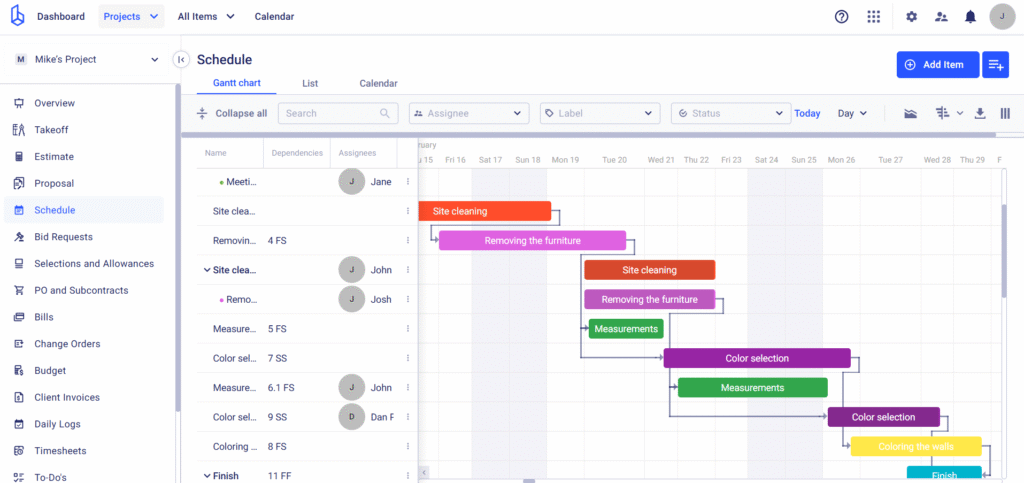
For example, if framing cannot begin until the foundation is complete, Buildern automatically reflects this relationship in the schedule. Additionally, you can choose to highlight the critical paths and see the sequence of tasks that directly impact the project’s completion date.
Assigning Tasks to Team Members
A well-structured schedule is about timelines and accountability. You can keep in mind all sorts of dependencies, but if you don’t have the right person assigned to a task, it can still fall behind schedule.
To further enhance accountability, construction software allows sending automatic reminders and updates, ensuring assigned team members are always aware of their upcoming tasks and changes.
Linking Selections and Estimate Items to the Schedule
Another powerful feature of Buildern’s scheduling system is its ability to link certain estimate items and client selections directly to the schedule. This means that when a specific material or service is approved in the estimate, it can automatically trigger updates in the project schedule.
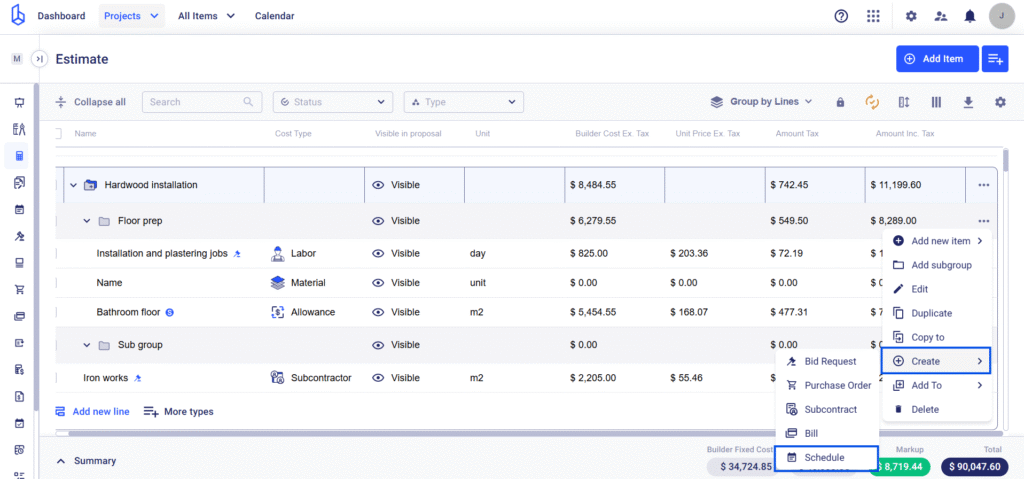
For instance, if a client selects a particular type of flooring, the schedule can reflect the estimated delivery and installation time, ensuring everything is planned accordingly. This integration helps avoid last-minute surprises, keeps the project organized, and prevents material shortages or scheduling conflicts.
3. Accurate Estimating and Cost Control
Estimating is the foundation for any construction project, and it’s more than just crunching numbers. A single miscalculation can lead to budget overruns and dissatisfied clients.
Having software to automate this is how you ensure accuracy from the very first measurement and calculation to the final project execution.
From Takeoff to Estimate in a Single Click
One of the standout features of our construction estimating tool is its ability to connect takeoff measurements directly to estimates. Instead of manually transferring data between different platforms, users can perform their digital takeoffs within Buildern and instantly add the measurements to their estimate.
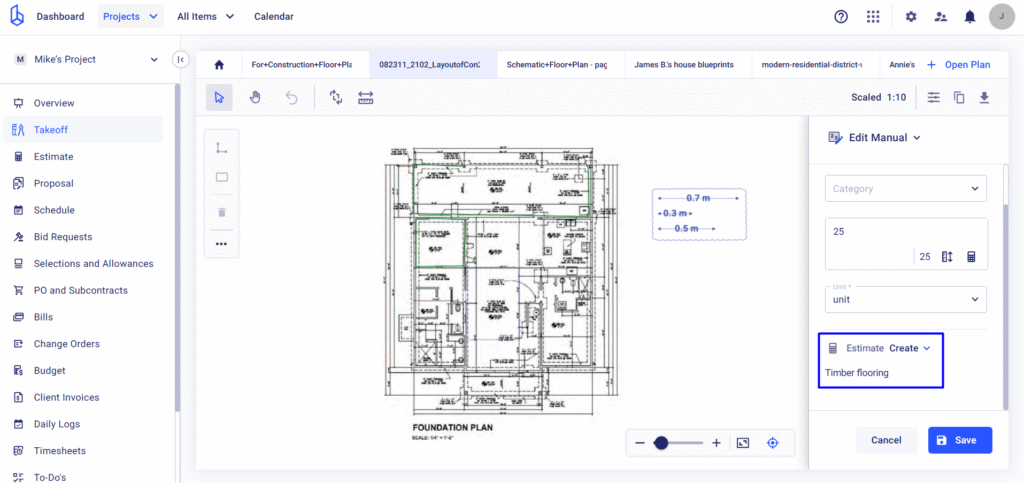
This means that when a builder calculates the flooring area needed for a project, they can use the exact measurement in the quantity field, allowing for precise cost calculations with built-in formulas. This streamlined workflow reduces errors and saves hours of manual data entry, making the entire estimating process significantly faster.
Flexible and Structured Estimate Creation
Next is grouping and customizing every aspect of your estimate according to the cost types, like materials, labor, equipment, or assemblies. Each item can be categorized, ensuring clarity and better cost tracking throughout the project.
For complex projects that require multiple interdependent components, users can create assemblies that combine several related cost items under one group. For instance, when estimating drywall installation, an assembly can include materials like drywall sheets, screws, joint compound, labor costs, and equipment rental, all connected in a single entry. This not only speeds up estimating but also ensures consistency and accuracy across projects.
Importing Estimates from Third-Party Software
For builders who already have estimates in other platforms, Buildern makes data migration simple. Users can easily import estimates from third-party software, allowing them to transition seamlessly without having to recreate estimates from scratch. This feature is particularly useful for teams working with external partners or switching to Buildern from another estimating solution.

4. Improved Bidding Processes
Working with subcontractors and vendors requires ongoing communication and coordination in construction projects. Buildern enables efficient bid management, saving contractors time and effort while ensuring a competitive bidding process.
Automated Bid Invitations
Buildern’s advanced bidding software turns the whole bidding process into a seamless and automated workflow. Builders can create bids with just a few simple clicks and send them to the chosen sub/vendors, who can then respond and submit their bids via email. Your partners shouldn’t necessarily be Buildern’s users to receive the bid and collaborate with you.
Another outstanding feature is the bid leveling, allowing builders to compare the bids submitted by subcontractors and suppliers side by side. This makes it easier to choose the best offer based on price, availability, and reputation.
5. Third-Party Integrations
The ease of adaptation and integration with third-party solutions turn construction project management software into a versatile tool for any team. With Buildern, you can integrate your favorite accounting tools like QuickBooks and Xero to take advantage of its powerful construction accounting features.
Moreover, our integration with Zapier opens access to dozens of apps and tools that can further enhance your project management process. This integration creates powerful automation capabilities for Buildern users who are willing to connect their accounts with other apps with zero coding required. Currently, the integration allows syncing data and automating repetitive tasks with custom-made zaps.
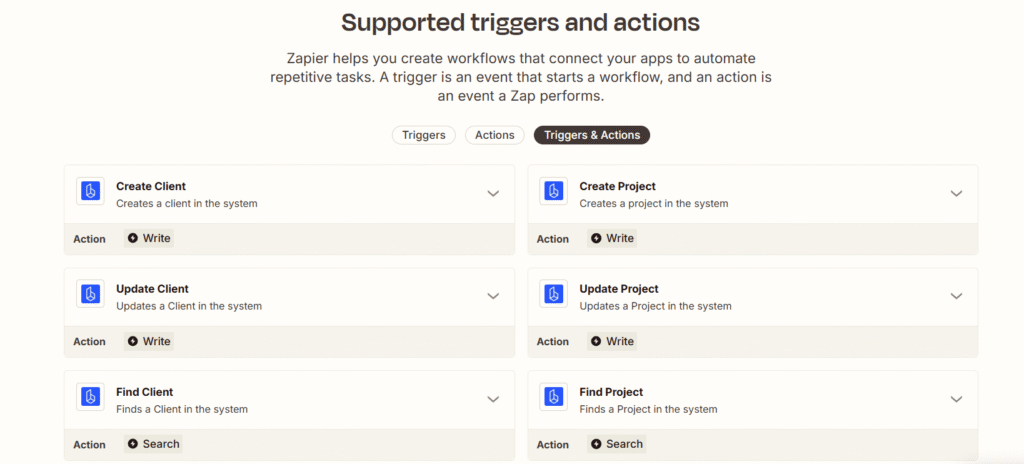
6. Enhanced File Access and Sharing
Managing construction documents can be chaotic when files are scattered across different platforms, requiring multiple logins and access requests. With Buildern, file storage and sharing are integrated into the same platform you use for project management. This eliminates the need for third-party software or external drives that not everyone on your team can access.
We allow users to store and organize all essential files in a unified platform, ensuring that team members always have access to the latest versions of blueprints, permits, contracts, and more. Supporting nearly all file types from PDFs and images to ZIP files, Buildern makes it easy to upload, categorize, and retrieve documents without delays.
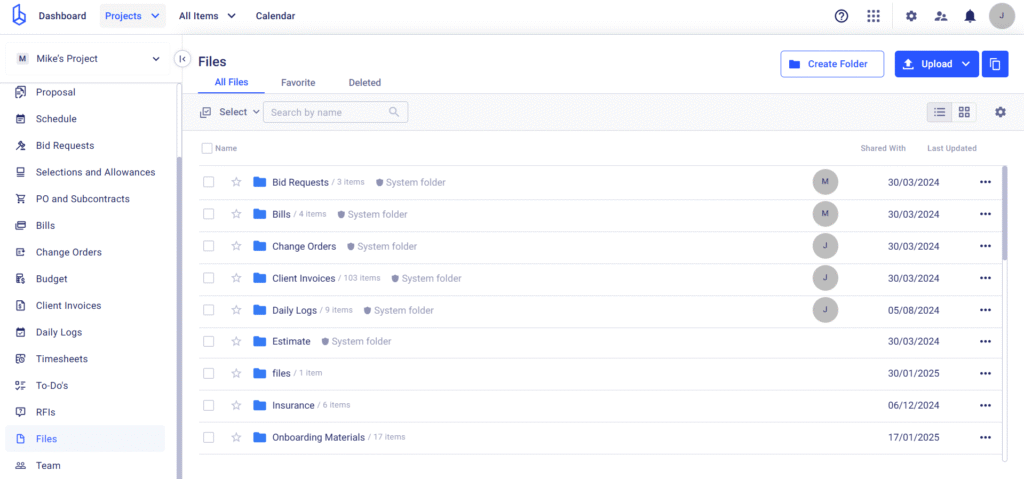
A standout feature is the ability to generate PIN-protected QR codes for files and folders directly within Buildern. This means field teams can quickly scan a code with their mobile devices to access the most up-to-date plans or documents.
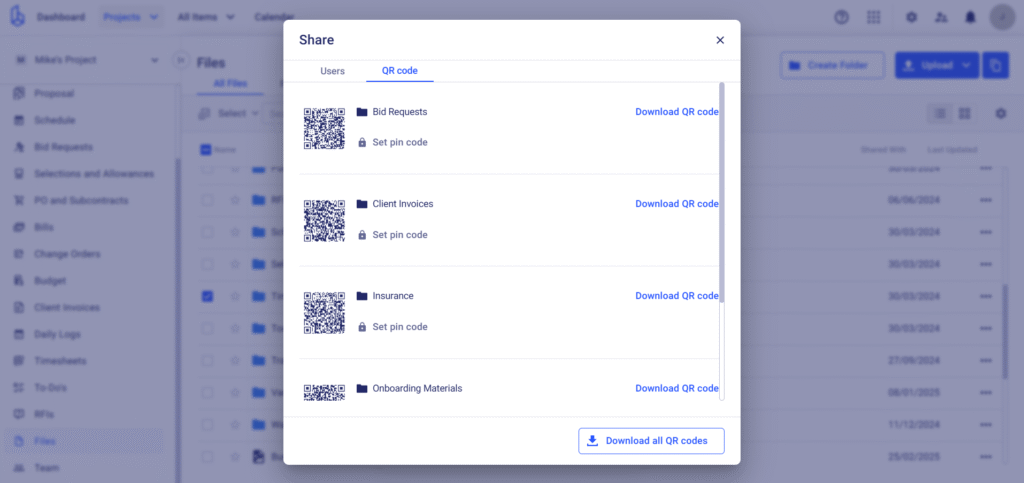
No searching, no confusion, and no outdated versions floating around.
This streamlines on-site coordination, reducing miscommunication and ensuring every stakeholder has the right information at the right time.
7. Resource Management
Resources go beyond labor and materials during construction projects, including everything from subcontractor bids to contracts, files, etc. Managing all the moving parts across several platforms can often turn into bottlenecks and costly miscommunication.
That’s how a centralized resource management platform like Buildern’s integrated resource management can help. By managing bids, estimates, contracts, and documentation in a single platform, teams can reduce back-and-forth emails, minimize risks, and make faster, more informed decisions.
1. Centralizing Bids and Estimates
Rather than jumping between spreadsheets, emails, and scattered notes, Buildern lets users track all project bids and estimates in a single platform. You can quickly create and send bid requests to subcontractors, receive and compare their offers, and tie the selected bids directly to your project estimate.
By keeping client communications and vendor responses linked to each bid, the entire team can stay on the same page. No more guessing who sent what or searching email threads for key information. Everything is centralized and fully traceable.
2. Organizing Files, Contracts, and Drawings
Buildern also acts as your project’s digital filing cabinet. You can store contracts, floor plans, architectural drawings, permits, and any other essential documentation in one secure location. All the files and folders can be easily attached to specific tasks or scheduled items, making it easy to locate the necessary version.
Access permissions can be customized by team member roles, ensuring that sensitive information is only visible to authorized people.
Types of Construction Management Software
Construction software isn’t just another tool, but an umbrella solution that covers every aspect of a construction project’s lifecycle.
Think of it as a digital command center. Instead of using a separate app for cost estimation, another for task scheduling, and yet another for document storage or team communication, a comprehensive construction management solution like Buildern combines it all.
That means you get advanced features like:
- Detailed data insights of analytics software
- The flexibility of resource planning tools
- The precision of job costing systems
- The structure of project management
- The convenience of invoice management platforms
And so much more!
This unified approach doesn’t just simplify your tech stack by eliminating the need to pay a fortune to multiple software programs every month. It also streamlines your workflows, reduces costs, and minimizes the risk of errors caused by disconnected systems.
FAQs
What are the main benefits of construction management software?
Advanced construction management software solutions bring clarity, efficiency, and control to every project. All the aspects, including communication, estimating, and billing, can be affected as the work becomes less manual and more error-free. The right software can also help you centralize documentation and tasks, ensuring all stakeholders have access to the most up-to-date information.
Why is construction software important?
The complexity, along with all the moving parts of modern construction projects, demands more than spreadsheets and scattered emails. Integrating the right software into your daily routine can help automate repetitive tasks, track progress, and maintain a better reputation in front of the sub/vendors and clients. As a result, companies that use dedicated software are more likely to deliver high-quality results efficiently and profitably.
What’s the difference between project management software and construction management software?
General project management solutions offer more general solutions like task tracking and collaboration, which may be useful for some projects, but don’t fully cover construction needs. Builders need to estimate and send out proposals, create detailed schedules with dependencies, and link them to various stages of their construction project. For such cases, only a comprehensive solution that goes beyond project tracking can support the full scope of all your operations.


